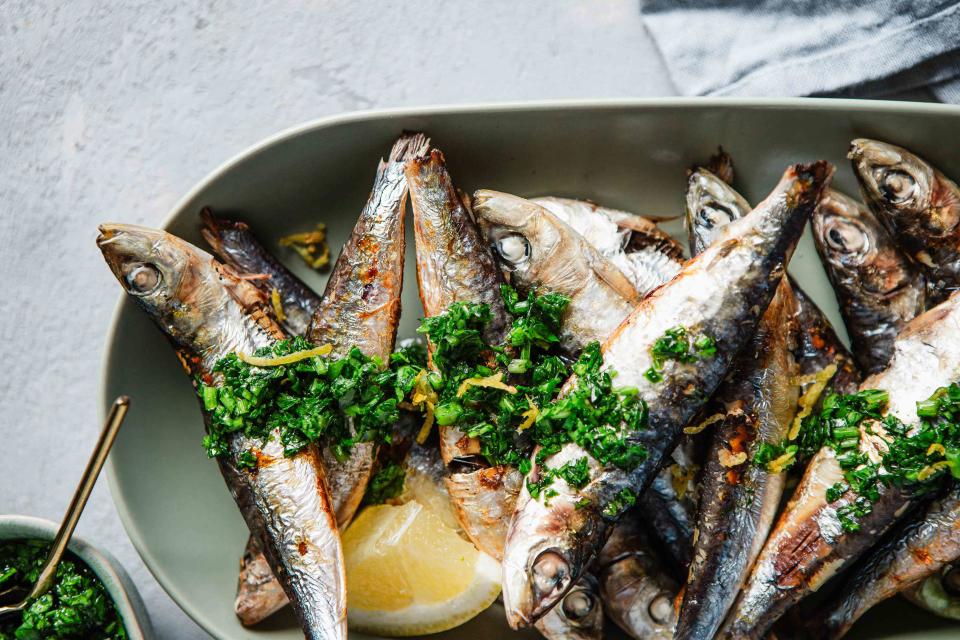Eating Like a Salmon Is Better Than Eating Actual Salmon, Study Finds
Eating lower on the food chain may mean massive nutritional gains for humans.

alvarez / Getty Images
Thanks to the fatty fish's dense nutritional profile, consuming salmon has generally been considered essential to a healthy human diet. But eating like salmon may very well be the actual key to health beyond the famed Mediterranean diet.
A new peer-reviewed study published in Nature Food journal challenges the perception that simply eating salmon is the healthiest choice. Instead, the analysis, which was conducted by researchers at the University of Cambridge, Lancaster University, University of Stirling, and the University of Aberdeen, found that eating what salmon typically consume — small wild fish such as mackerel, anchovies, and herring — is more nutritionally beneficial to humans.
(And yes, that’s great news for all the “hot girls” who love tinned fish.)
Related: Everything You Should Know About Tinned Seafood
The study, titled “Wild Fish Consumption Can Balance Nutrient Retention in Farmed Fish,” used data collected in Norway's fish farms and examined why farmed salmon fillets lacked the same quantity of nutrients that wild salmon generally contain — averaging a loss in six out of nine nutrients, including calcium, iodine, iron, omega-3, vitamin B12, and vitamin A. Amounts of calcium, in particular, were found to be five times more plentiful in wild-feed fish fillets. Eating lower on the food chain, that is, consuming what salmon feast on, can help humans get these critical vitamins, minerals, and fatty acids directly from the source.
“People should consider eating a greater and wider variety of wild fish species like sardines, mackerel, and anchovies to get more essential nutrients straight to their plate,” said Dr. David Willer, the study’s lead author and professor in the Zoology Department at the University of Cambridge. “What we’re seeing is that most species of wild fish used as feed have a similar or greater density and range of micronutrients than farmed salmon fillets.”
Better yet, eating tiny fish is said to be better for the environment, because it allows larger fish populations to thrive and puts less strain on the aquatic food systems. Smaller fish, which live shorter lives, naturally contain less mercury than larger fish and are known for being abundant sources of protein, calcium, iron — and vitamins D, A, and B12.
Related: A Guide to Cooking with Anchovies
“Making a few small changes to our diet around the type of fish that we eat can go a long way to changing some of these deficiencies and increasing the health of both our population and planet,” Willer said.
But there’s no need to panic, dear salmon lovers. The fish is still very much on the menu. Particularly, wild salmon.
The study calls for reallocating one-third of food-grade, wild-feed fish for direct human consumption. This means not using these fish as food for farmed salmon, which are not as nutritious for humans, but creating human-grade food from these little guys and allowing wild salmon to thrive in their natural habitats. The end result would ideally add more nutrients to the human diet and increase wild seafood populations, meaning there would be abundant nutritious and well-fed salmon in the seas and eventually on our plates.
For more Food & Wine news, make sure to sign up for our newsletter!
Read the original article on Food & Wine.

 Yahoo Movies
Yahoo Movies 
